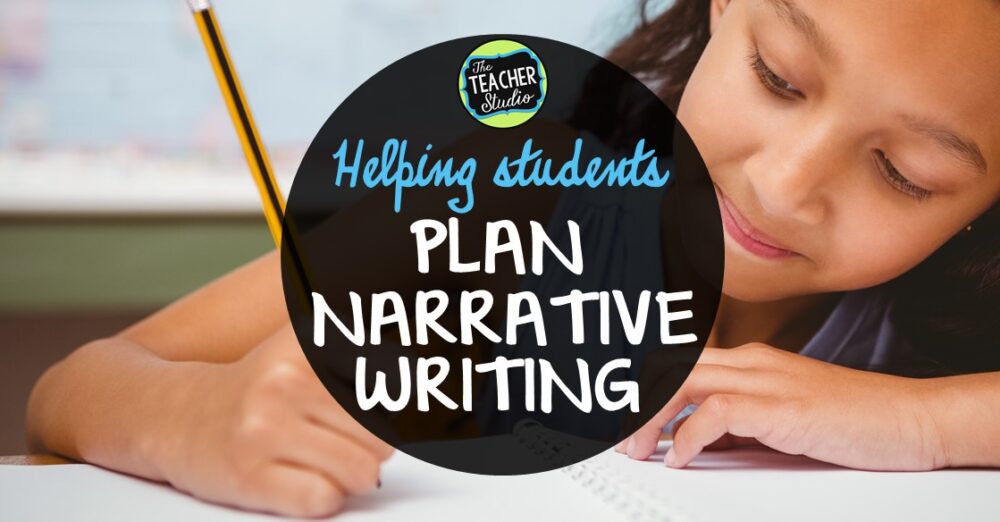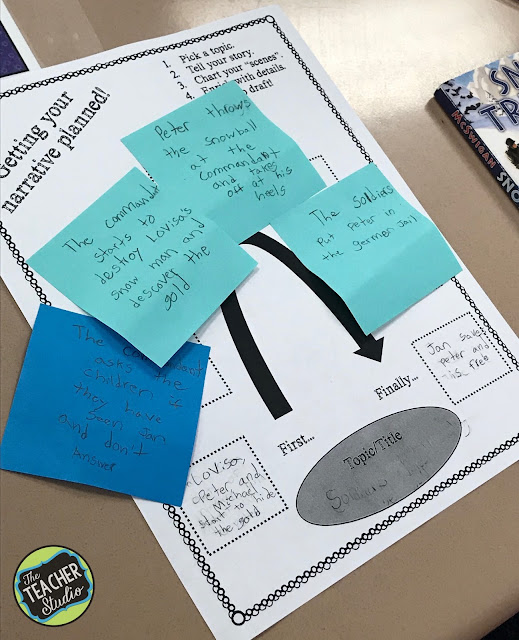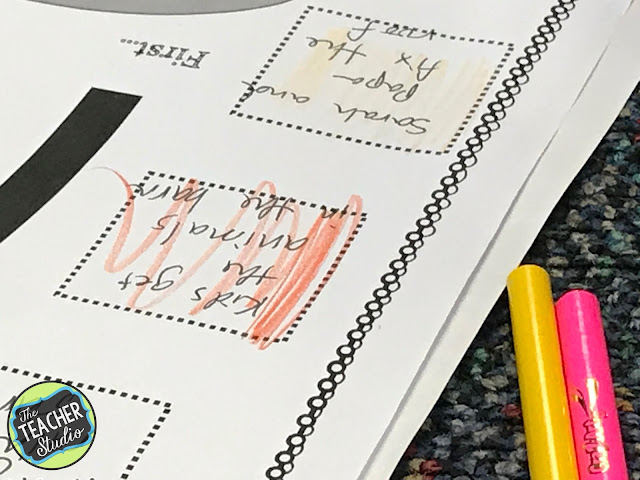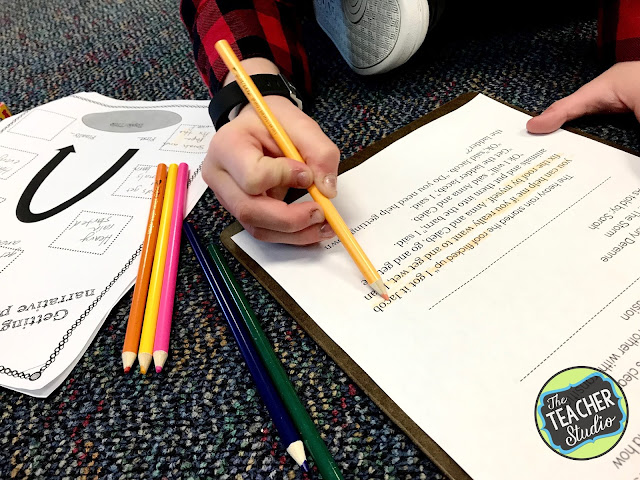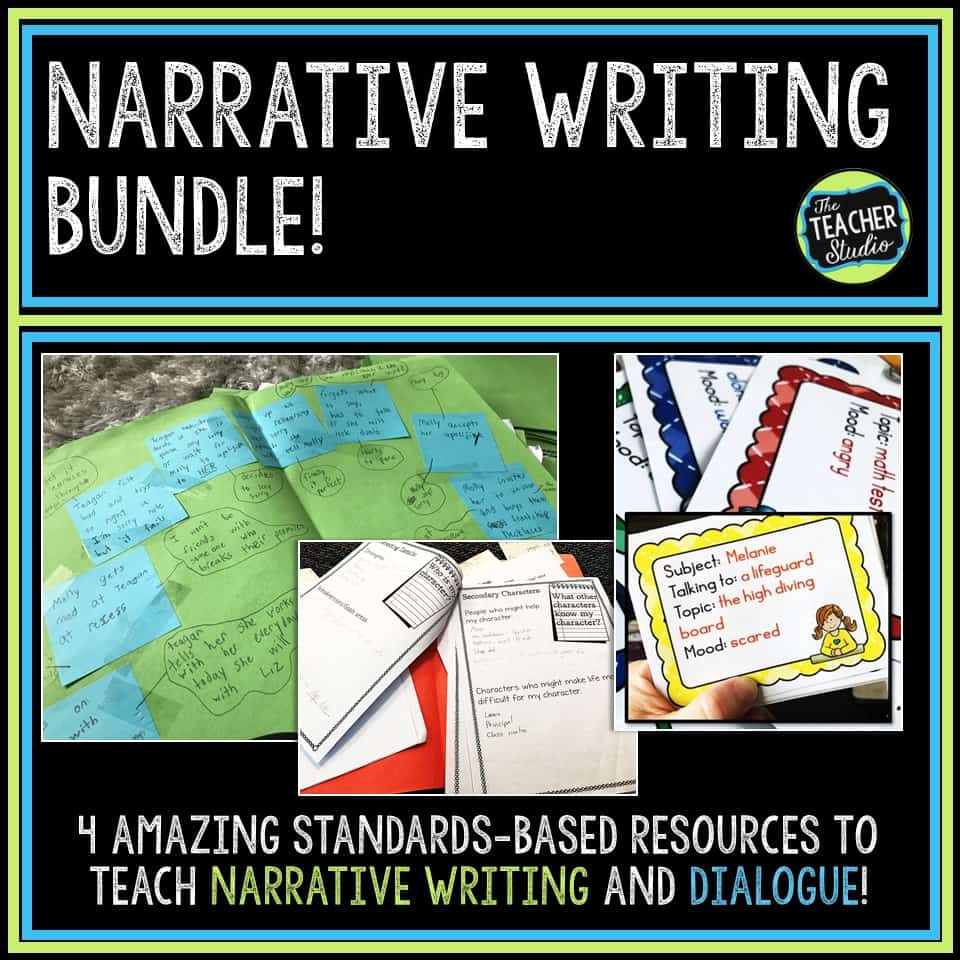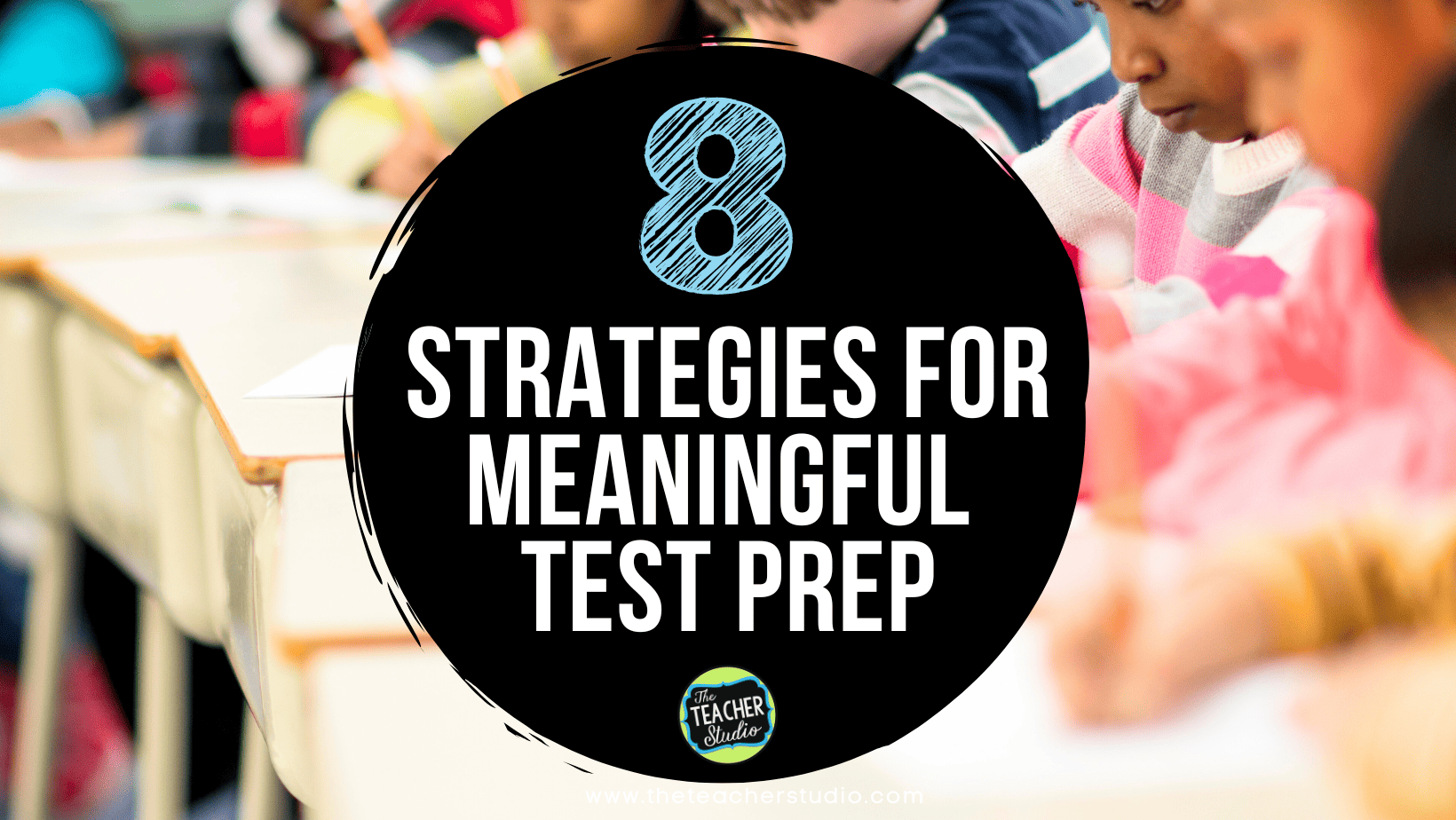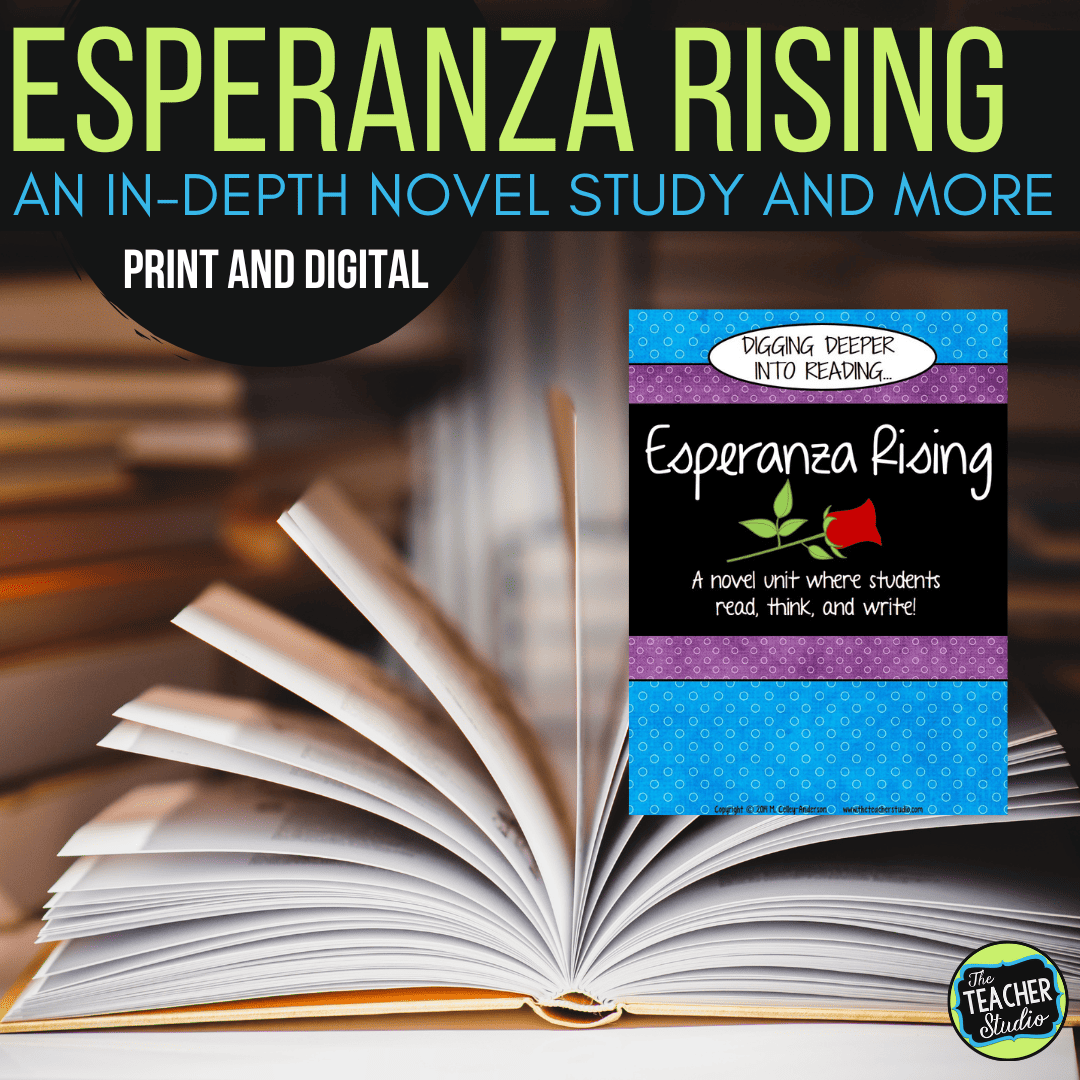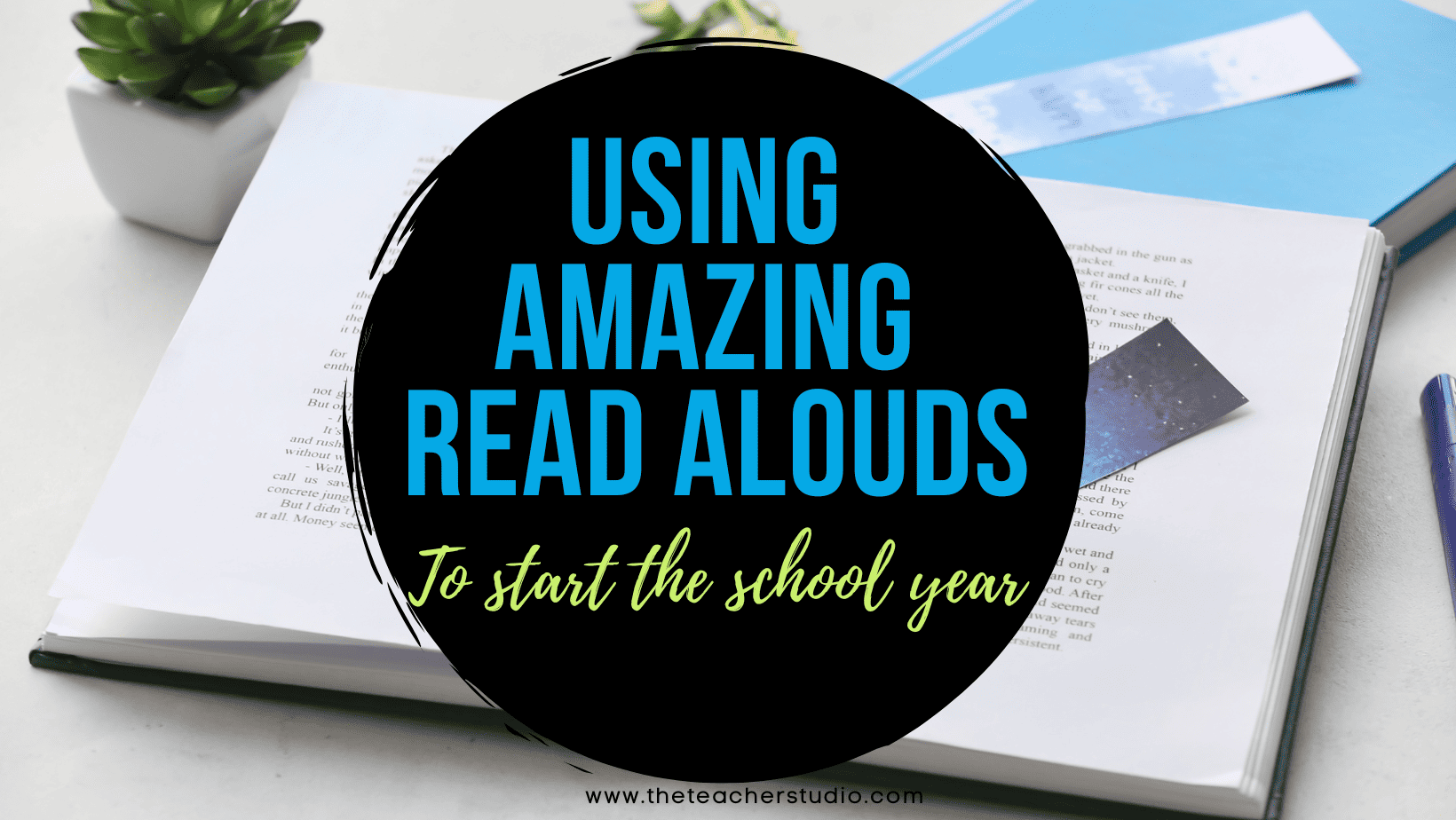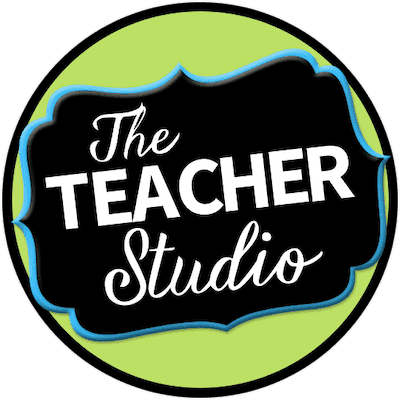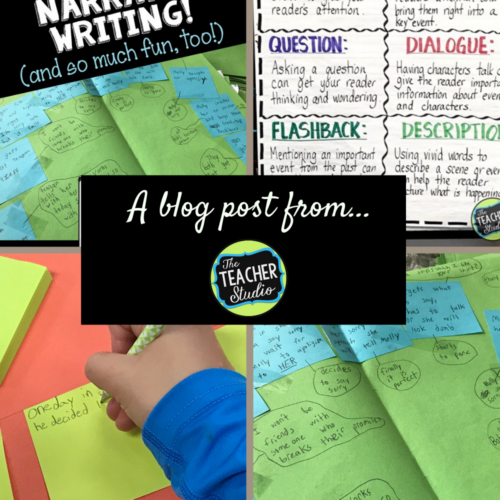
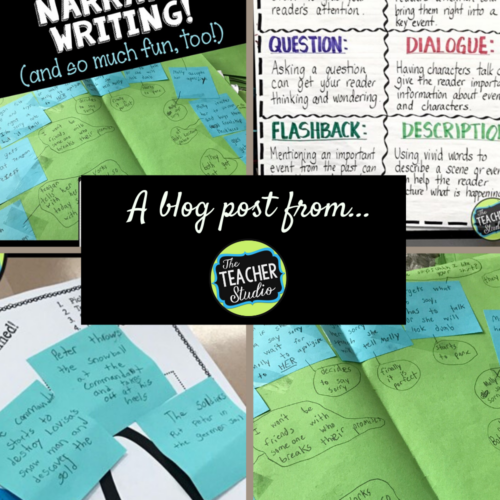
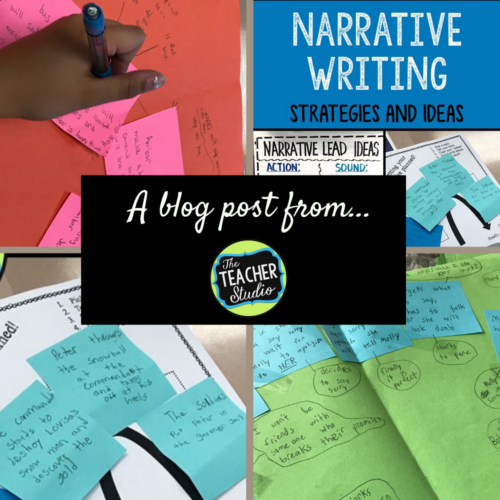
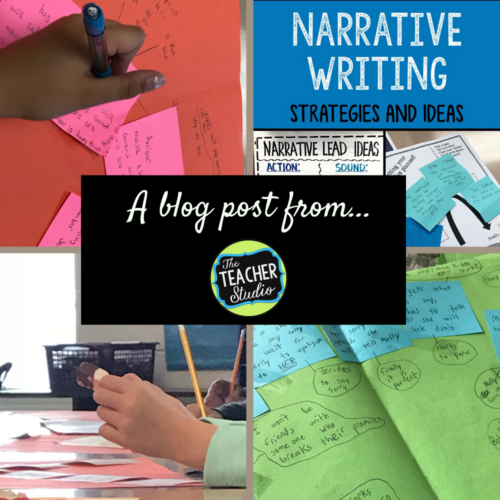
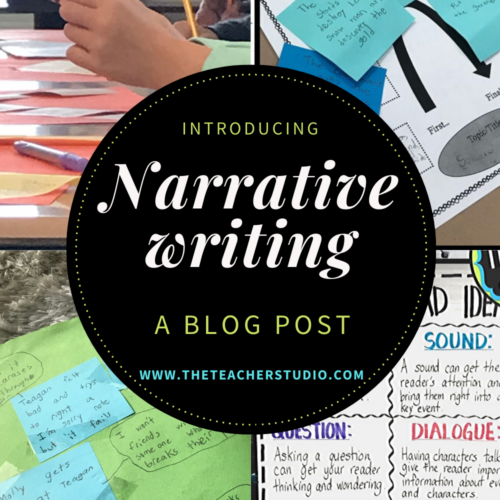
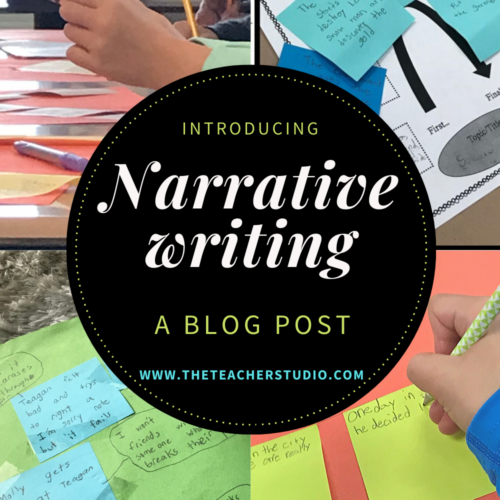
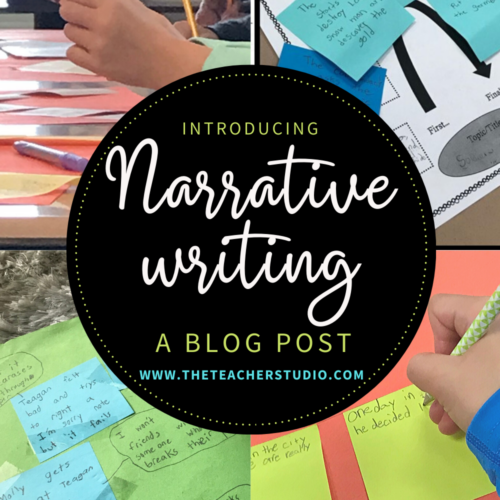
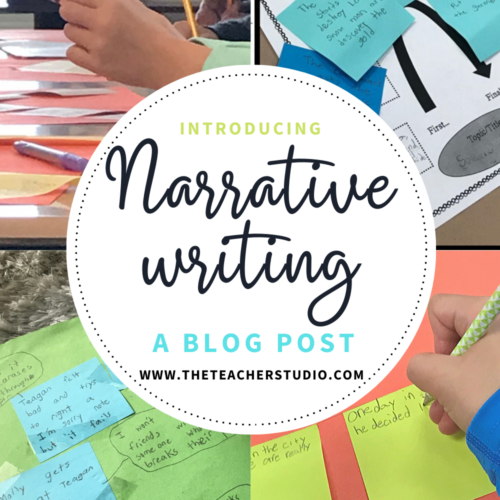
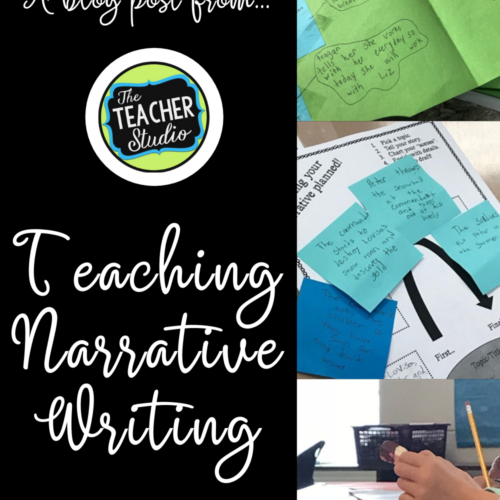
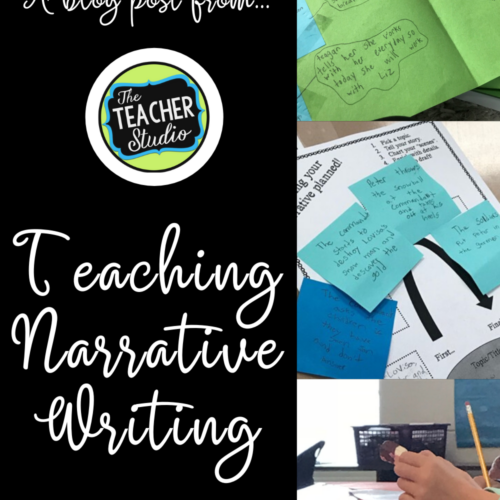
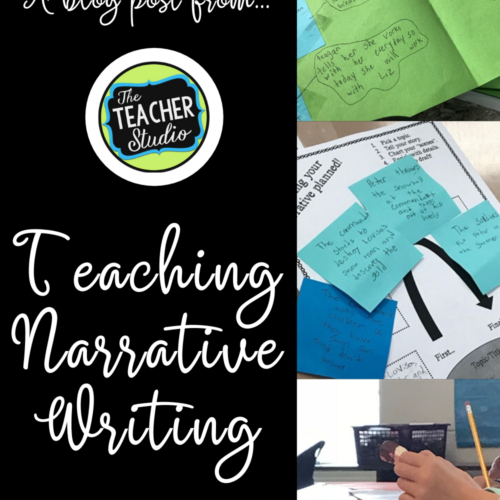
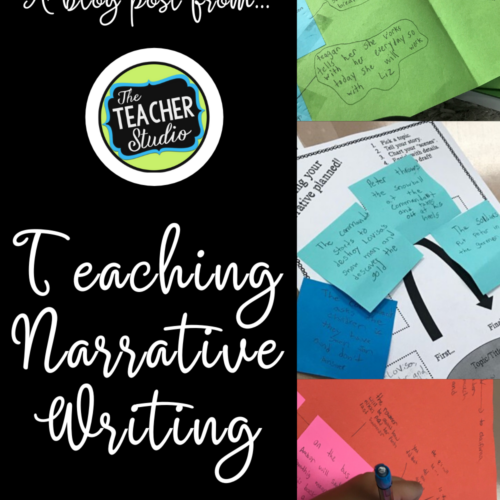
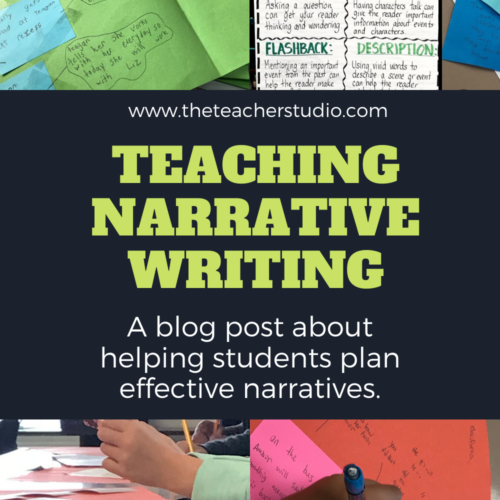
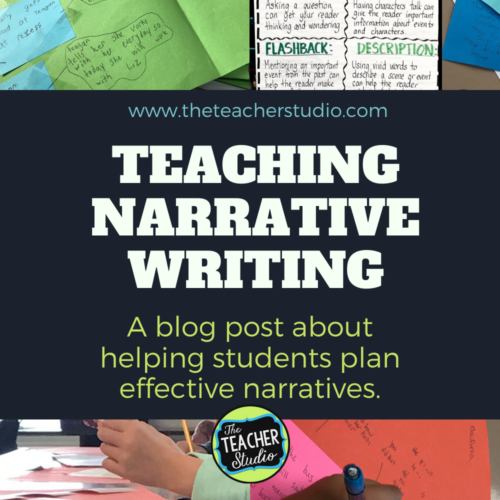
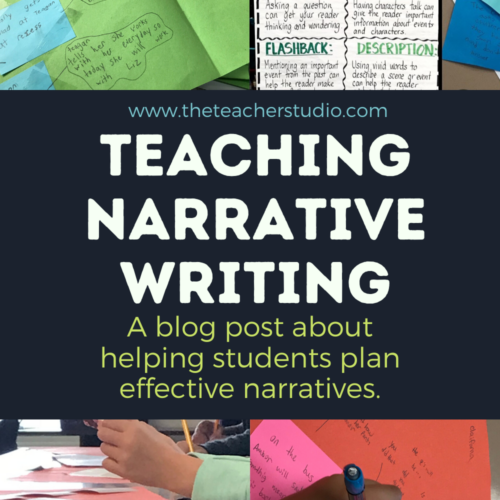
During our historical fiction unit, our curriculum gives students the opportunity to do a unique type of narrative writing. They take a key “scene” from one of the books we have read (either as a read aloud or their book club novel) and rewrite one scene from a different character’s point of view. To really guide and scaffold their work, I wrote my own narrative from our read aloud as they wrote theirs, modeling each step of the process along the way. Gradual release to help them with planning narrative writing? Yes indeed!! I love that by having the storyline more established, students could focus on some of the other details involved in writing quality narratives.
Planning Narrative Writing 101
It was the perfect time for us to review some key narrative writing skills and strategies. We did mini lessons on planning drafts (I LOVE using sticky notes for students to write “micro” events that flow…so easy to rearrange or remove), on working in sensory details, a review of dialogue strategies and techniques, and how to write a quality lead. (The narrative planning tools and dialogue lessons can be found HERE if you are interested.)
Teaching Narrative Leads and Writing “Hooks”
Because our stories were already “planned” (thanks to the original author), we focused on how to get our reader hooked. We studied chapter beginnings in our current read aloud and found that each chapter had its own mini-lead. That’s what we tried to do to get our readers “hooked” into our own narratives.
We used this anchor chart to help us generate ideas. Everyone experimented with different leads and then chose their favorite one to begin their narrative.
Teaching Revision Strategies
As students were working, I observed that some students were struggling to expand the events on their planning map despite the modeling I did. I broke out one of my favorite revision strategies–color coding. To begin, I pulled a small group of struggling students together with their drafts and their planning map. I asked them to assign each box on their plan a color and then had them shade the sentences in their draft that matched.
Students began to notice which “micro” events were well described and which were not. Some started to notice details that weren’t important and others that were out of sequence. After studying their drafts and their color-coding, all had a clear plan for revision when they returned to their desks.
I love that this strategy can be used with ANY type of writing…opinion essays, book reviews, narratives–whatever. It is very visual and gives students a tangible starting place. Struggling writers need to gather as many tools into their toolbox as possible, and I love that this one can be learned and practiced and used for the rest of their academic career.
Looking for some of these narrative resources? They are bundled here…
CLICK HERE for another great post about narrative writing! Want to pin this post for later?
Hey there! Looking for more? Follow me on social media and by email!
you can also sign up for my NEWSLETTER where I start you off with an awesome freebie–
and then you will get even more teaching tips, freebies, and offers delivered right to your mailbox!

